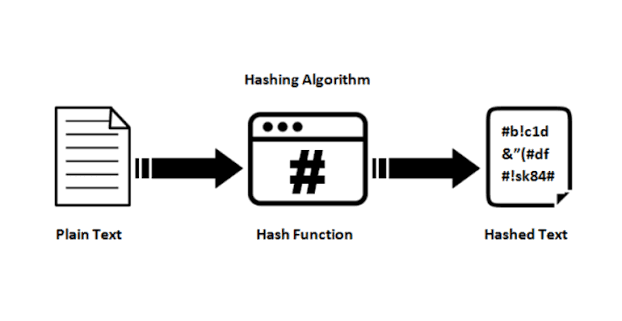
SHA-3/256 generator
Created on 29 September, 2025 • Generator tools • 97 views • 3 minutes read
Learn about SHA-3/256 generator: secure hashing, benefits, real-world uses, and how to generate it.
SHA-3/256 Generator – The Complete Guide to Secure Hashing in 2025
Introduction
In the age of cyber threats, protecting sensitive data has never been more important. From password storage to blockchain technology, hashing algorithms are at the heart of modern security systems. One of the most powerful and reliable options available today is the SHA-3/256 algorithm.
Unlike SHA-2, which has been around for decades, SHA-3 was standardized by NIST in 2015 as the next-generation hashing standard. The SHA-3/256 generator produces a 256-bit hash using the Keccak sponge construction, offering strong resistance to cryptographic attacks while remaining efficient.
This article will explain what SHA-3/256 is, how it works, why it matters, and how to generate SHA-3/256 hashes for your applications.
What is SHA-3/256?
SHA-3/256 is part of the Secure Hash Algorithm 3 (SHA-3) family, which includes SHA-3/224, SHA-3/256, SHA-3/384, and SHA-3/512. It is based on the Keccak algorithm, which won the NIST hash function competition.
- Digest size: 256 bits (32 bytes)
- Construction: Keccak sponge function
- Standardized by: NIST in 2015
- Purpose: Data integrity, authentication, digital signatures, and security
Unlike SHA-2 (which includes SHA-256 and SHA-512), SHA-3 offers different internal mechanics, making it an excellent alternative if SHA-2 weaknesses are ever discovered.
Why Use SHA-3/256?
1. High Security
SHA-3/256 is highly resistant to collision attacks, preimage attacks, and length-extension attacks.
2. Future-Proof Design
SHA-3 is designed as a backup to SHA-2. If vulnerabilities are ever found in SHA-2, SHA-3 algorithms like SHA-3/256 will still provide protection.
3. Optimal Digest Size
With a 256-bit output, SHA-3/256 strikes the perfect balance between security and efficiency, making it widely applicable.
4. Versatility
It’s used in blockchain, APIs, authentication systems, file integrity verification, and digital signatures.
How Does SHA-3/256 Work?
SHA-3/256 uses the Keccak sponge construction, which works differently from traditional Merkle–Damgård designs like SHA-2.
Here’s how it works:
- Message Absorption – Input data is padded and absorbed into the Keccak state.
- Permutation – A series of transformations scramble the data securely.
- Squeezing Phase – The algorithm “squeezes” out a 256-bit digest.
This design makes SHA-3/256 more resistant to certain cryptographic attacks and more flexible in security applications.
SHA-3/256 in Real-World Use Cases
- Blockchain Technology – Used for transaction validation and digital signatures.
- APIs & Authentication – Creates secure tokens for authentication.
- File Integrity Verification – Ensures files have not been tampered with during transfer.
- Password Protection – While bcrypt and Argon2 are better for password hashing, SHA-3/256 can still protect passwords when combined with salting.
- Digital Certificates – Provides strong cryptographic foundations for SSL/TLS.
How to Generate SHA-3/256 Hashes
1. Using Python
[object HTMLPreElement]2. Using OpenSSL (Linux/macOS)
[object HTMLPreElement]3. Using Node.js
[object HTMLPreElement]4. Online Tools
Many online SHA-3/256 generators allow you to paste text or upload files and instantly generate a hash.
Advantages of SHA-3/256
- ✅ Stronger security than SHA-1, MD5, and even SHA-2 in some scenarios
- ✅ Resistant to length-extension attacks
- ✅ NIST-approved and future-proof
- ✅ Suitable for web security, APIs, and blockchain
- ✅ Efficient for both short and long messages
Limitations of SHA-3/256
- ❌ Not as widely adopted as SHA-256
- ❌ May be slower on older hardware without Keccak acceleration
- ❌ Password hashing is better done with bcrypt, scrypt, or Argon2
SHA-3/256 vs Other Hash Functions
AlgorithmDigest SizeSecurity LevelUsageMD5128 bitsBrokenNot recommendedSHA-1160 bitsBrokenDeprecatedSHA-256256 bitsStrongWidely used in blockchainSHA-512512 bitsVery strongDigital signatures, large dataSHA-3/224224 bitsStrongLightweight appsSHA-3/256256 bitsStrong & future-proofBlockchain, APIs, securitySHA-3/512512 bitsUltra-strongHighly secure applications
SHA-3/256 vs SHA-256 – Which Should You Choose?
- SHA-256 (SHA-2): Widely adopted, faster on older hardware, heavily used in Bitcoin and blockchain.
- SHA-3/256: More secure design, resistant to different attack types, future-proof.
👉 If you want compatibility and speed, stick to SHA-256. 👉 If you want future-proofing and higher security, choose SHA-3/256.
Conclusion
The SHA-3/256 generator is a powerful cryptographic tool designed for the future of cybersecurity. Built on the Keccak sponge construction, it delivers robust protection against modern cryptographic attacks.
While SHA-256 remains the industry standard, SHA-3/256 offers a future-ready alternative that ensures data integrity, authentication, and security across industries. Whether you are a developer, blockchain enthusiast, or security professional, understanding and using SHA-3/256 can help strengthen your digital systems.
Popular posts
-
Random number generatorGenerator tools • 133 views
-
Emojis removerText tools • 129 views
-
Lorem Ipsum generatorGenerator tools • 129 views
-
Reverse lettersText tools • 121 views
-
Old English text generatorText tools • 121 views